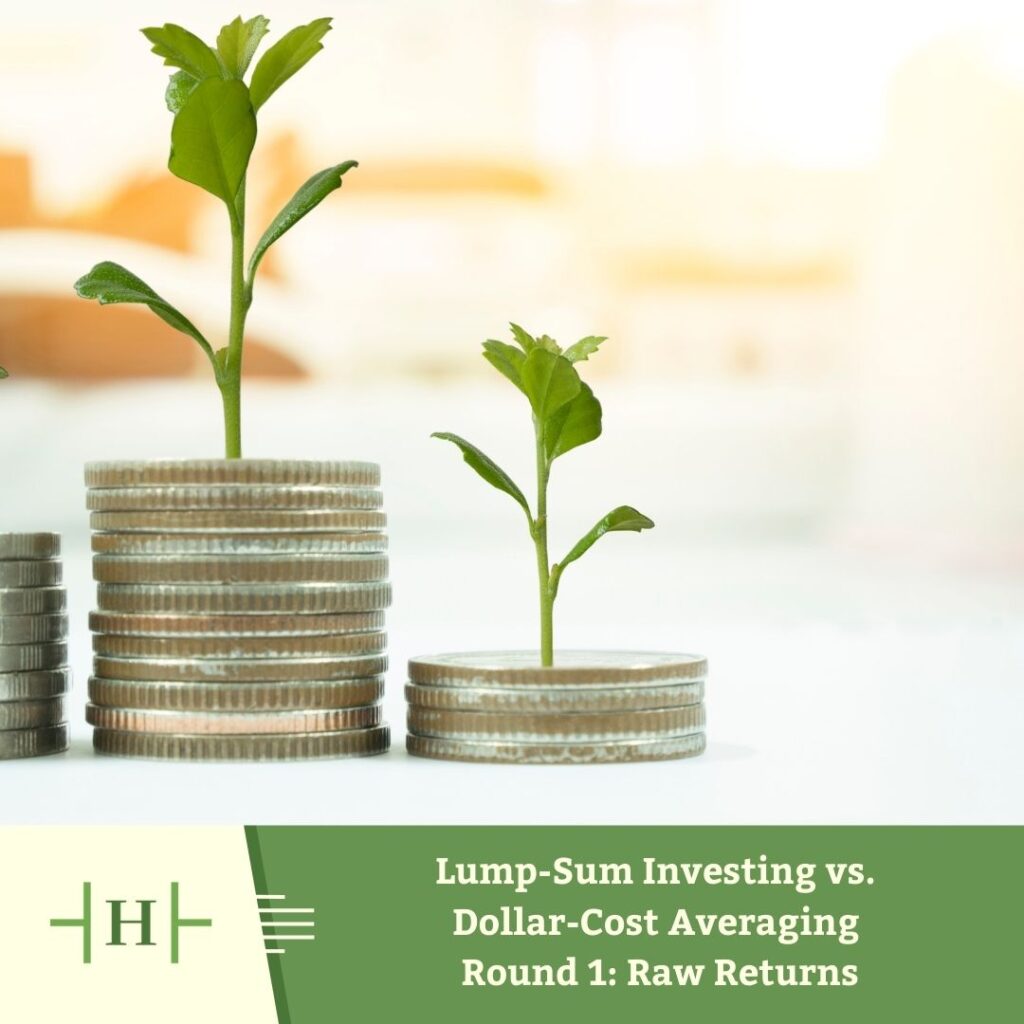September 30, 2024


Good news – you have an extra $24,000, and you’ve decided to invest it in the stock market. It’s always nice to have investable cash on hand. But you also might feel as if the pressure is on. Nobody enjoys seeing the market take a dive shortly after they jump in. Unfortunately, we never know when it might do exactly that.
What’s an investor to do? Should you go ahead and invest the entire amount right away, or should you invest gradually, such as in 12 monthly installments?
In financial jargon, this is known as lump-sum investing (all at once) vs. dollar-cost averaging (over time). In more approachable terms, it’s often described as “plunging” vs. “wading” into the deep end of the market.
Which one should you use? In terms of raw expected returns, lump-sum investing is preferred. But sometimes, there are equally valid, if less tangible reasons to favor dollar-cost averaging. In this two-part series, we’ll explore both possibilities.
Round One: Raw Returns
In a match-up against lump-sum investing vs. dollar-cost averaging, which is the better bet? Everyone from academics to financial practitioners, to the financial press have weighed in on the matter, and have reached a consistent conclusion:
Lump-sum investing generally improves your odds for earning higher returns compared to dollar-cost averaging.
For example:
Who is more likely (although not guaranteed) to come out ahead? Keisha’s lump sum has a better chance of generating more wealth than Kevin’s dollar-cost averaging.
This general expectation is well-established in academia, at least as far back as a landmark study published by George Constantinides in a 1979 Journal of Financial and Qualitative Analysis. Others have expanded on the theme ever since, examining nuances such as:
So far, our general rule of thumb holds. Even without academic analysis, this makes sense:
When the choice is available, a purely rational investor should generally prefer lump-sum investing to dollar-cost averaging.
That said, we humans love to wonder whether generalities apply to us. What if you are not yet convinced a lump-sum investment makes sense for you, your personal circumstances, and the latest market conditions.
This brings us to round two of our match-up between lump-sum investing vs. dollar-cost averaging. We’ll share those results soon. The winner has yet to be declared.